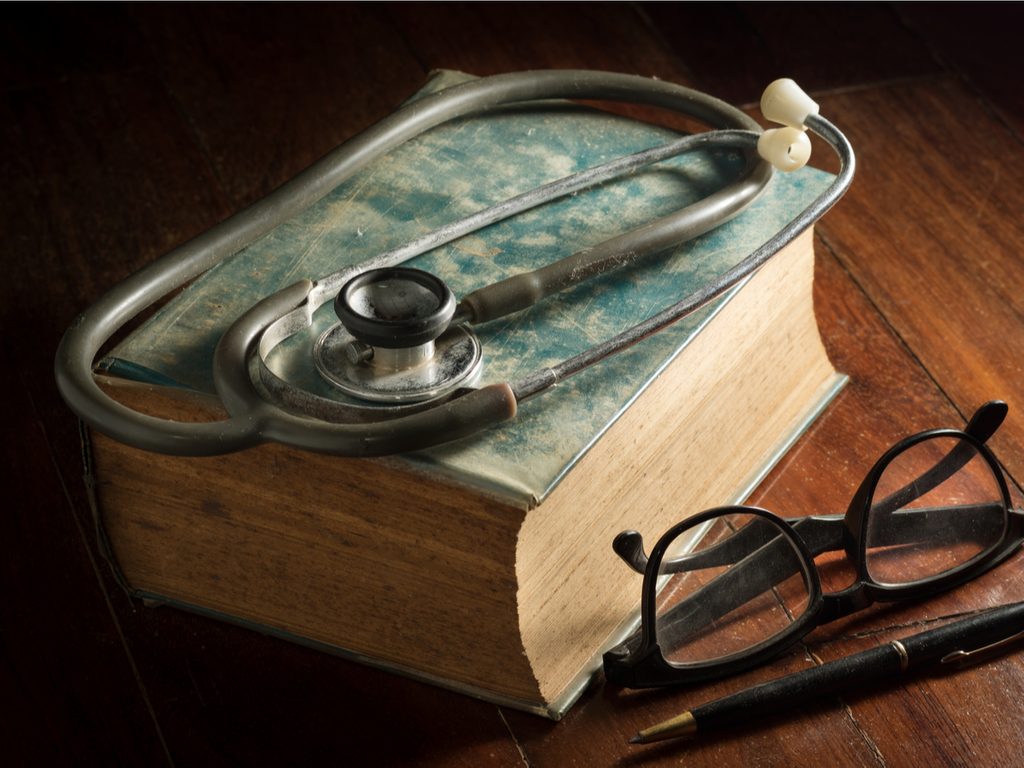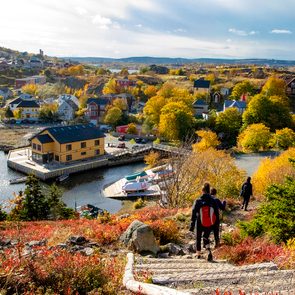Memoirs of a Doctor in Small Town Newfoundland

A surgeon reminisces about his time serving the community in beautiful Newfoundland and Labrador.
From 1957 to 1964, I was a medical officer and general surgeon at the Grenfell Mission Hospital in St. Anthony, Newfoundland and Labrador. While there, I made numerous medical trips by sled dogs and snowmobile along the southern Labrador coast from Forteau to Red Bay. I preferred riding with the dog teams because it was a time of quiet reflection compared to the noise and cold winds on a snowmobile. An added plus to travelling with the sled dogs was that they don’t have mechanical breakdowns!
Stops were made at various small communities along the stretch of the coast, including the Point Amour Lighthouse. I always called on Jeff Wyatt, the keeper of the lighthouse, not only to check up on his health but to chat over a cuppa tea at his home. Among the many tales he’d relay to me, there was a time when the British naval vessel, the HMS Raleigh, ran aground at the Point in 1922. Jeff helped salvage the vessel and he brought home many artifacts from the ship.
A steep climb to the top of the lighthouse gives a spectacular panoramic view of the historic L’Anse Amour and Forteau Bay. During one visit, I turned to take in a final view of the lighthouse and snapped a photo with the sun behind the dome. Now hanging on a wall at my home, this photo serves as a reminder of wonderful times from the past.
In St. Anthony, there were clinic boats that were left on a dry dock during the winter. The Colonel Leonard was a vessel we used for local coastal medical calls where there were no roads. There was also a larger vessel named Maraval that was equipped with X-ray and medical supplies and equipment. It was used not only along the northern peninsula of Newfoundland but also on the Labrador coast for medical care and TB surveillance.
The surgical cases I encountered during my time in the operation rooms at St. Anthony’s ranged from the simple and mundane to the most unusually complicated emergencies. Our surgical team was experienced, well organized and our efforts brought gratifying results.
Accompanying me on my coastal visits to the communities was a nurse stationed at Forteau. She knew who the most critically ill patients were that I needed to visit first. Eventually, a clinic was set up where all the folks who wanted to see the doctor could go.
A lot of people would come to the clinic in need of a tooth repair or asking for an extraction, as there was no corrective dentistry during those times. I got tutored by the resident dentist at the St. Anthony Hospital, who taught me which forceps to use and how to give local anaesthetic injections.
The dental chair I used during those visits was actually a kitchen chair placed at the corner of the room by a window, with a coal oil lamp used as a light source. A pillow behind the head rest served as support. Those needing further medical care or evaluation were sent by the Mission aircraft back to St. Anthony.
Decades later, I’m still reminded of how welcoming the people of Newfoundland and Labrador are. This quality of theirs is known by all who come to visit or live there. The hospitality shown by the people of Gander after the grounding of aircraft during the 9/11 tragedies is just one wonderful example of the compassion and friendliness found in the province.
My wife Erma and I made our last trip back to “The Rock” in 1998. I should add that Erma and I met in St. Anthony while she was a school teacher at the Grenfell Elementary School. During our last visit, we visited the homes of old friends and of some of my former patients. We were greeted with open arms, and shed tears at our departure.
Next, read the heartwarming story of how one woman in Petty Harbour is bringing Newfoundlanders back to their fishing roots.






